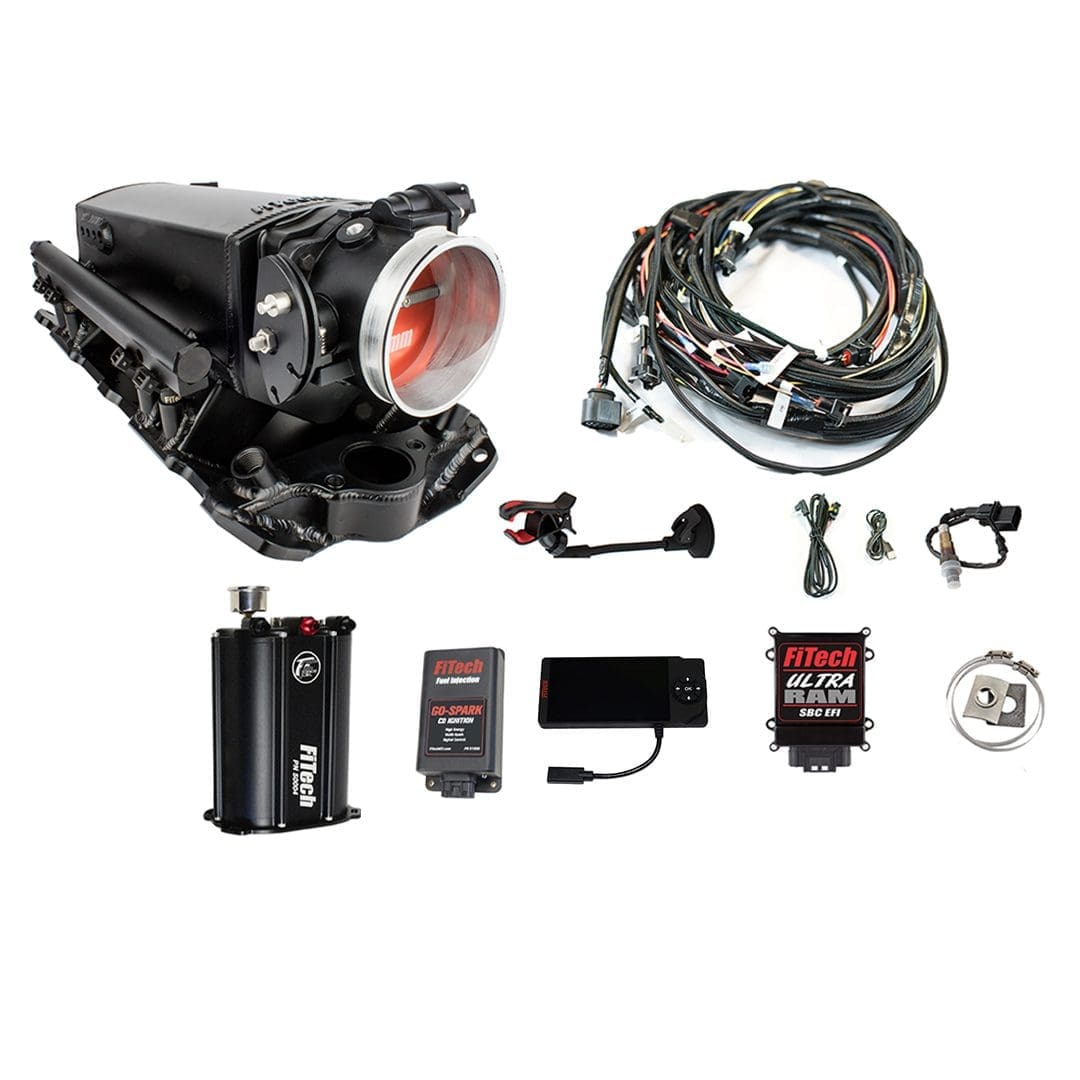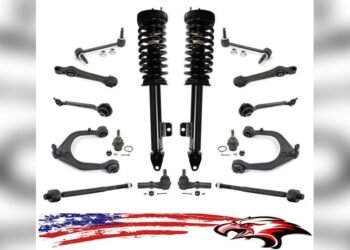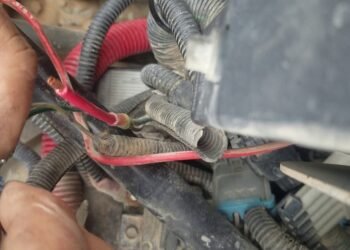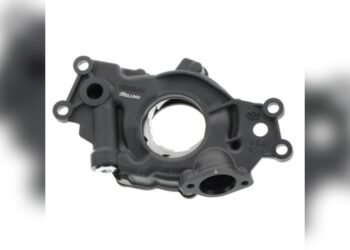Are you struggling with your FiTech EFI system and unsure why your engine isn’t running smoothly? You’re not alone.
Many FiTech EFI users face common problems like rough idling, starting issues, or poor acceleration that can be frustrating and hard to diagnose. But don’t worry—understanding these issues is the first step to fixing them and getting your vehicle back to peak performance.
You’ll discover the most common FiTech EFI problems, easy troubleshooting tips, and simple fixes you can try yourself. Keep reading to take control of your fuel injection system and enjoy a smoother, more reliable ride.
Common Fitech Efi Issues
FiTech EFI systems offer excellent fuel management but can face issues over time. Understanding common problems helps maintain smooth engine performance. These problems often affect fuel delivery and engine response. Recognizing symptoms early can save time and repair costs.
Clogged Fuel Injectors
Dirt and debris block fuel injectors easily. This reduces fuel flow to the engine cylinders. The engine runs lean, causing poor performance. Symptoms include rough idling and hesitation during acceleration. Regular cleaning or injector replacement solves this issue.
Starting Problems
FiTech EFI may cause hard starting or no start conditions. Faulty sensors or low fuel pressure are common causes. The ECU may not get correct data to manage fuel delivery. Checking fuel pump and sensor connections helps identify the problem quickly.
Rough Idling And Poor Acceleration
Uneven idle and weak acceleration point to fuel or air delivery issues. The EFI system might deliver inconsistent fuel amounts. Vacuum leaks or dirty sensors also disrupt engine balance. Fixing leaks and cleaning sensors improves engine smoothness.
Electrical Connection Faults
Loose or corroded wiring causes poor EFI system communication. This leads to erratic engine behavior or warning lights. Ensuring tight and clean electrical connections restores proper system function. Regular inspection prevents future electrical issues.

Credit: www.youtube.com
Basic Troubleshooting Steps
Troubleshooting FiTech EFI problems starts with simple checks. Basic steps help identify common issues fast. These steps save time and prevent costly repairs.
Each step focuses on a key part of the EFI system. Follow them carefully to find the root cause of the problem. Clear problems early and get your engine running smoothly again.
Checking Fuel Delivery
Fuel delivery is vital for EFI systems to work correctly. First, check the fuel pump for proper operation. Listen for a humming sound when the key turns on.
Next, inspect the fuel filter. A clogged filter blocks fuel flow and lowers engine performance. Replace it if dirty or old.
Check fuel lines for leaks or cracks. Damaged lines cause pressure loss and poor fuel delivery. Fix any leaks promptly.
Inspecting Wiring And Sensors
Wiring issues often cause EFI problems. Look for loose or corroded connectors. Secure all wiring harnesses firmly.
Sensors send critical data to the EFI system. Test sensors like the throttle position sensor and coolant temperature sensor. Replace faulty sensors to restore proper function.
Resetting The Efi System
Resetting the EFI system clears stored errors and resets learned settings. Use the handheld controller to access the “Go EFI Initial Setup” menu.
Select “Reset Learn,” then choose “Reset All Learn.” Confirm the reset by waiting for the dashboard numbers to go black. This saves the new settings.
Turn the key off and on again to complete the reset. This step often fixes minor software glitches.
Verifying Ecu Communication
The ECU controls the EFI system. Confirm it communicates properly with the handheld controller. A failure here stops the EFI from working.
Check the ECU connectors for tightness and corrosion. Use diagnostic tools to test ECU signals. Repair or replace the ECU if it fails communication tests.
Resetting Fitech Efi
Resetting FiTech EFI can solve many common issues quickly. It helps clear old data and lets the system learn fresh settings. This process improves engine performance and smooths operation. Resetting is simple with the handheld controller designed for ease of use. Follow clear steps to reset and confirm changes properly. Proper reset keeps your FiTech EFI running at its best.
Accessing The Handheld Controller
Start by turning on your vehicle’s ignition without starting the engine. Grab the FiTech handheld controller. Press the power button to activate the device. Navigate through the menu using the joystick. Find the “Go EFI Initial Setup” option. This menu holds the reset functions you need.
Using Reset Learn Function
In the setup menu, locate the “Reset Learn” choice. Select “Reset All Learn” to clear all previous data. Press the joystick IN button to send this command to the ECU. This action tells the EFI system to erase old learning. It prepares the system for fresh fuel and air adjustments.
Confirming Reset Completion
After sending the reset command, turn the ignition off. Watch the dashboard numbers carefully. Wait until all numbers turn black or go blank. This signals the reset saved correctly. If numbers remain, repeat the reset steps to ensure success.
When To Perform A Reset
Reset the FiTech EFI after installation or changes. Do it if the engine runs rough or stalls. Also reset if fuel economy drops suddenly. Resetting helps when sensors or parts are replaced. Use reset as the first step in troubleshooting EFI problems.
Advanced Diagnostics
Advanced diagnostics play a key role in solving FiTech EFI problems. This process helps identify issues quickly and accurately. It saves time and prevents guesswork. Using the right tools ensures your engine runs smoothly. Here we explore the main diagnostic steps to keep your FiTech EFI system in top shape.
Reading Error Codes
Error codes reveal the exact problems in your EFI system. A scanner connects to the FiTech controller to read these codes. Each code points to a specific fault, like a sensor failure or fuel delivery issue. Reading codes is the first step in fixing EFI problems. It helps avoid unnecessary parts replacement and reduces repair time.
Fuel Pressure Testing
Fuel pressure affects engine performance and EFI operation. Testing pressure ensures fuel reaches the injectors correctly. Use a fuel pressure gauge on the fuel rail. Compare the readings to FiTech’s recommended values. Low or high pressure indicates a problem with the pump or regulator. Accurate pressure testing prevents rough idling and poor acceleration.
Sensor Calibration
Sensors provide data that the EFI system uses to adjust fuel delivery. Calibrating sensors keeps this data accurate. Common sensors include the throttle position sensor and oxygen sensor. Calibration involves resetting or adjusting sensor outputs. Proper calibration improves fuel efficiency and engine response. Neglecting sensors leads to drivability issues and higher emissions.
Software Updates
FiTech EFI systems use software to control engine functions. Manufacturers release updates to fix bugs and improve performance. Updating your EFI software keeps the system stable and efficient. Use the handheld controller or connect to a computer for updates. Regular updates reduce errors and enhance compatibility with new sensors or parts.
Fitech Vs Other Efi Systems
FiTech EFI systems are popular for upgrading older engines with modern fuel injection. Comparing FiTech to other EFI systems reveals key differences that affect choice and performance. Understanding these differences helps users decide which system suits their needs best.
This section breaks down the comparison into throttle body vs multi-point injection, self-tuning features, installation complexity, and performance versus budget factors.
Throttle Body Vs Multi-point Injection
FiTech mainly offers throttle body injection (TBI) systems. These systems replace the carburetor with a single fuel injector. Other EFI systems, like multi-point injection (MPI), use one injector per cylinder. TBI is simpler and cheaper but less precise than MPI. MPI provides better fuel delivery and efficiency. FiTech TBI suits street cars and mild builds. MPI fits performance engines needing more control.
Self-tuning Features
FiTech systems have built-in self-tuning that adjusts fuel settings automatically. This helps beginners avoid complex tuning tasks. Other EFI brands offer manual tuning or require external software. FiTech’s handheld controller simplifies adjustments on the fly. It learns the engine’s behavior over time. This feature reduces setup time and tuning errors.
Installation Complexity
FiTech EFI units are designed for easy installation. They often come as plug-and-play kits with minimal wiring. Other EFI setups may need custom wiring and sensors. FiTech reduces the need for professional help. This makes it popular for DIY enthusiasts. Still, some mechanical skills are required for best results.
Performance And Budget Considerations
FiTech provides a balance between cost and performance. It is affordable and improves fuel efficiency and throttle response. High-end EFI systems offer more precise fuel control and tuning options but cost more. FiTech fits most budget builds and daily drivers. For racing or heavy modifications, advanced EFI systems may perform better.
Preventive Maintenance Tips
Preventive maintenance is key to keeping your FiTech EFI system running smoothly. Small checks and routine care stop many common problems. This saves time and money on repairs. Follow simple steps to protect your investment and enjoy better engine performance.
Regular Fuel Filter Replacement
Replace the fuel filter regularly to avoid clogging. Dirty filters block fuel flow. This causes poor engine performance and hard starts. Change the filter every 12,000 miles or as recommended in your manual. Clean fuel keeps the EFI system working well and extends engine life.
Cleaning Fuel Injectors
Fuel injectors can get dirty from fuel deposits. This reduces spray quality and engine efficiency. Clean injectors every 15,000 to 20,000 miles. Use a fuel injector cleaner or have a professional service them. Clean injectors improve fuel delivery and engine response.
Checking Electrical Connections
Loose or corroded electrical connections cause EFI problems. Check all wiring and plugs regularly. Clean any corrosion and tighten loose connections. Good electrical contact ensures accurate signals between sensors and the EFI computer. This keeps your engine running smoothly.
Updating Firmware Periodically
Firmware updates improve EFI system performance and fix bugs. Check for updates from FiTech regularly. Use the handheld controller or connect to a computer to update. Keeping firmware current ensures your EFI system runs with the latest improvements and reliability.
Upgrading Fuel System Components
Upgrading fuel system components is essential for a smooth FiTech EFI experience. Proper upgrades help avoid common problems and improve engine performance. Each part must match the system’s needs and handle the required fuel flow. This section breaks down key areas to focus on during upgrades.
Fuel Pump Requirements
The fuel pump must deliver enough pressure and volume for the EFI system. FiTech EFI often requires a high-flow, electric pump to maintain stable fuel delivery. Using a pump with lower specs can cause fuel starvation and engine issues. Choose a pump designed for EFI with at least 60 psi pressure.
Fuel Line Compatibility
Fuel lines must handle the higher pressure of EFI systems. Standard carburetor lines may burst or leak under EFI conditions. Use fuel lines rated for EFI or high-pressure applications. Ensure all fittings are tight and compatible to prevent leaks and maintain fuel flow.
Tank Modifications
Fuel tanks often need changes to fit EFI components. Installing a return-style fuel system may require a return line in the tank. Some tanks need internal baffling to reduce fuel sloshing. Proper tank setup ensures consistent fuel supply and prevents vapor lock or fuel starvation.
Injector Choices
Selecting the right injectors is vital for EFI success. FiTech systems need injectors matched to engine size and power output. Too small injectors cause lean conditions, while too large injectors can flood the engine. Use high-quality injectors designed for EFI to ensure smooth running.

Credit: www.youtube.com

Credit: fitechefi.com
Frequently Asked Questions
What Is The Problem With The Efi System?
The EFI system often faces clogged fuel injectors from dirt and debris. This causes rough idling, poor acceleration, and reduced engine efficiency. Blockages prevent proper fuel spray, leading to decreased engine performance and drivability issues. Regular maintenance helps avoid these common EFI problems.
Which Is Better, Fitech Or Holley Sniper 2?
Holley Sniper suits beginners seeking easy, plug-and-play EFI with self-learning features. FiTech appeals to advanced users wanting detailed self-tuning and varied horsepower options. Choose based on your tuning skills and performance needs.
How To Reset Fitech Efi?
To reset FiTech EFI, access the “Go EFI Initial Setup” menu on the handheld controller. Select “Reset Learn,” then choose “Reset All Learn. ” Press the IN button to send the command to the ECU. Turn the key off and wait until dashboard numbers go black to confirm the reset.
What Is The Best Aftermarket Efi System?
The best aftermarket EFI system depends on needs. Holley Sniper offers easy plug-and-play setup. FiTech suits advanced self-tuning and varied horsepower. Both improve drivability and performance over carburetors. Choose based on budget, tuning preferences, and vehicle requirements.
What Are Common Fitech Efi Problems?
Common issues include rough idling, poor acceleration, and failure to start.
Conclusion
FiTech EFI problems can disrupt your engine’s performance and cause frustration. Regular checks and cleaning help avoid clogged fuel injectors. Resetting the system’s learn mode often solves many common issues. Understanding basic troubleshooting steps saves time and money. Staying patient and following instructions ensures smoother operation.
Keep your FiTech EFI maintained for reliable vehicle function. Simple care can prevent many future problems with the system.
















